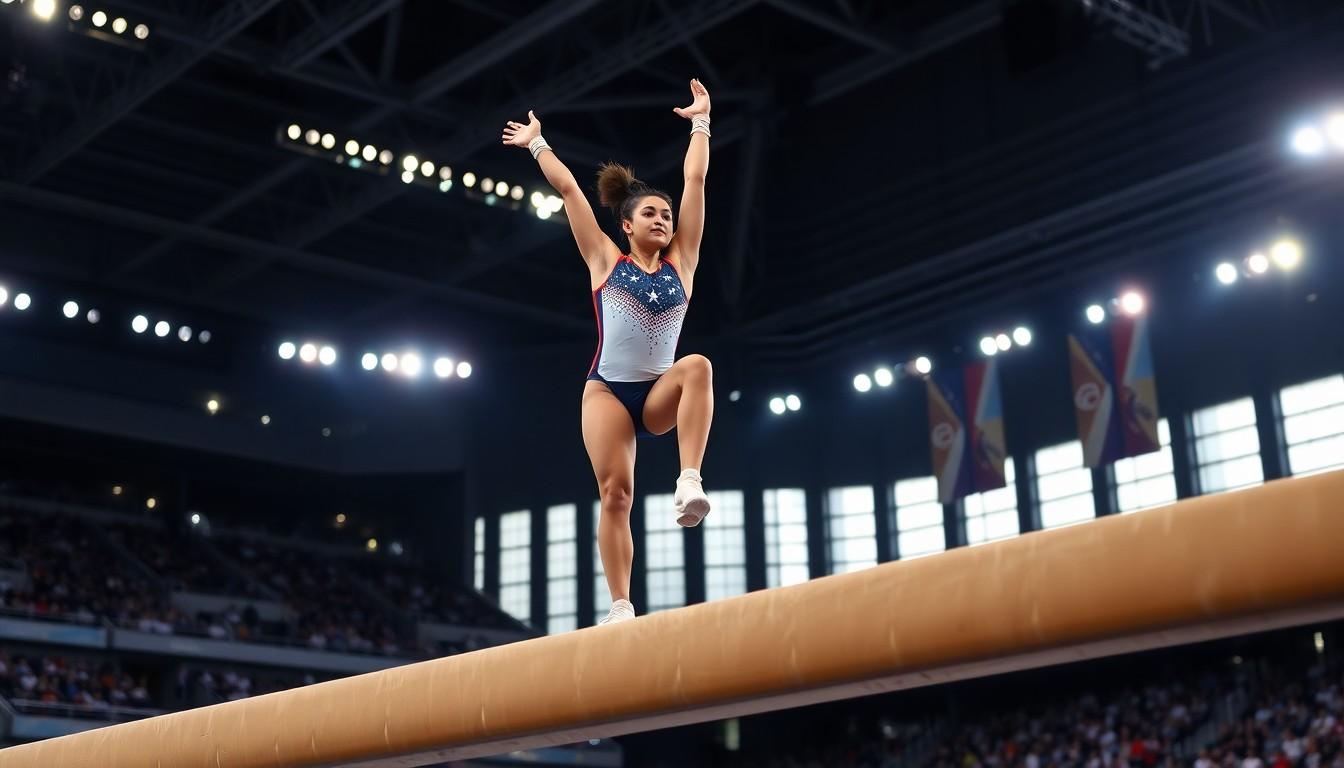Key Takeaways
- High Injury Rates: Sports such as gymnastics and wrestling are among the most injury-prone Olympic events, with gymnastics leading at 36 injuries per 1,000 athletes.
- Extreme Conditions: Events like ski jumping and bobsleigh expose athletes to severe risks due to high-speed environments, significantly increasing the potential for injury.
- Mental Strain: Athletes face psychological pressures that can affect performance and safety, highlighting the need for mental health support in competitive sports.
- Notable Incidents: Past Olympic accidents, such as those involving skaters and snowboarders, underscore the inherent dangers of high-risk sports and the importance of safety measures.
- Safety Protocols: Comprehensive training and safety measures, including strict guidelines and the use of protective gear, are critical in minimizing the risks athletes face in dangerous sports.
When it comes to the Olympics, athletes push their limits in pursuit of glory. While all sports carry some risk, a few stand out for their sheer danger. Among them, one sport consistently raises eyebrows and pulses: the adrenaline-fueled world of extreme sports.
From high-speed descents to gravity-defying stunts, these athletes face not just the pressure of competition but also the potential for serious injury. As the Olympics continue to evolve, understanding the risks associated with these thrilling events becomes essential for fans and competitors alike. Buckle up as we dive into the most dangerous Olympic sport and explore what makes it so perilous.
Most Dangerous Olympic Sport
Olympic sports encompass a wide range of competitions that test athletes’ strength, speed, skill, and endurance. These sports can be categorized into summer and winter events, with each season featuring unique disciplines.
Categories of Olympic Sports
- Summer Sports: This category includes athletics, gymnastics, swimming, and team sports like basketball and soccer. Summer sports showcase various skills, from speed and agility to coordination and teamwork.
- Winter Sports: Winter sports include skiing, snowboarding, and ice hockey. These events demand exceptional physical control and technique in challenging conditions.
Risks in Olympic Sports
- High Injury Rates: Sports like gymnastics and wrestling display elevated injury rates due to their physical demands. Ankle sprains and fractures are common among these athletes.
- Extreme Conditions: Sports such as ski jumping and bobsleigh expose athletes to high-speed environments. The potential for severe injuries increases dramatically in these adrenaline-fueled events.
- Adverse Physical Strain: Many sports, including rowing and weightlifting, exert tremendous strain on the body. This strain can lead to chronic injuries when athletes train intensively.
Popular Olympic Sports
- Track and Field: This sport comprises various events like sprints, hurdles, and marathons. Athletes rely on speed and stamina, making it a fan favorite.
- Swimming: Swimming has numerous disciplines, including freestyle and butterfly. Athletes compete both individually and as part of relay teams, yielding tight competition.
- Combat Sports: Boxing, judo, and wrestling represent intense individual competitions. Participants face significant risks due to physical contact and grappling.
Understanding these dynamics reflects the multifaceted nature of Olympic sports. The combination of competition and physical challenge raises awareness of the inherent dangers, setting the stage to identify the most dangerous Olympic sport.
The Concept of Danger in Sports

Danger in sports encompasses both physical and psychological elements, affecting athletes’ performance and overall safety. Understanding these aspects is vital for appreciating the risks inherent in Olympic competitions.
Physical Risks
Physical risks in sports range from minor injuries to life-threatening conditions. High-impact activities, like gymnastics and diving, often result in fractures or concussions; overuse injuries frequently occur in disciplines such as rowing and swimming. Also, extreme weather conditions pose threats, especially in winter sports like skiing and snowboarding. According to data from the National Center for Catastrophic Sport Injury Research, injuries in these sports can lead to long-term health issues, necessitating extensive rehabilitation. Comprehensive training and safety measures remain crucial in mitigating these risks.
Psychological Aspects
Psychological aspects of danger in sports include the mental strain athletes endure during competition. Pressure to perform can lead to anxiety, panic attacks, or burnout. Athletes often face fears of failure, which may manifest as heightened stress levels. This psychological pressure can directly impact physical performance, leading to risky behaviors and poor decision-making. Moreover, the stigma surrounding mental health issues in competitive sports often prevents athletes from seeking help. Recognizing the importance of mental well-being can drive conversations about support systems within Olympic environments.
Most Dangerous Olympic Sports
Olympic sports encompass a range of thrilling, yet perilous, disciplines. Certain sports exhibit higher injury rates, revealing inherent risks athletes face in pursuit of excellence.
Sports Ranking by Injury Rates
Several Olympic sports rank high for injury occurrences. The following table outlines injury rates for select sports:
| Sport | Injury Rate (per 1,000 athletes) |
|---|---|
| Gymnastics | 36 |
| Wrestling | 32 |
| Rugby Sevens | 30 |
| Diving | 25 |
| Skiing | 21 |
| Football | 19 |
| Weightlifting | 17 |
Gymnastics leads the list, with athletes frequently suffering from sprains, fractures, and concussions. Wrestling also shows a significant injury rate, linking to high levels of physical contact and strain. Rugby Sevens combines speed and contact, contributing to its elevated injury statistics. Diving and skiing inherently carry risks due to extreme heights and speed, respectively. Football and weightlifting exhibit substantial injury rates as well, highlighting challenges athletes experience across these disciplines.
Notable Incidents and Accidents
In Olympic history, notable incidents have underscored the dangers of certain sports. For example, in the 1998 Nagano Winter Olympics, the tragic accident of the U.S. figure skater Nancy Kerrigan occurred after being attacked, emphasizing safety concerns beyond physical competition. Additionally, during the 2014 Sochi Winter Olympics, Canadian athlete Ross Rebagliati faced a grave incident in snowboard cross, where he sustained severe injuries after a collision, reminding athletes and spectators alike of the risks involved.
In gymnastics, the 2016 Rio Olympics witnessed Simone Biles and other athletes coping with intense pressures, leading to discussions around mental health and safety. The combination of psychological strain and the physical demands of high-stakes competition poses risks that often go unnoticed until incidents occur.
Understanding the risks associated with these sports allows for improved safety measures and training protocols, aiming to minimize the potential for serious injuries in future competitions.
Athlete Perspectives
Athletes provide unique insights into the dangers of Olympic sports, shaped by their personal experiences and rigorous training. Their perspectives shed light on the risks and the measures taken to ensure safety in high-pressure environments.
Personal Experiences with Danger
Athletes often share vivid accounts of perilous moments during competition. Gymnasts recount falls from the beam or vault resulting in serious injuries, emphasizing the sport’s unpredictability. Divers describe the daunting impact of water after miscalculating a somersault, illustrating the fine line between success and injury. Skiers express the anxiety of navigating treacherous conditions, where a moment of distraction can lead to a catastrophic fall. These narratives highlight the constant presence of danger that athletes navigate daily.
Training and Safety Measures
Training regimens for Olympic athletes incorporate safety protocols to mitigate risks. Strength and conditioning programs focus on injury prevention, utilizing core stability exercises to enhance balance. Coaches emphasize technique refinement to reduce the likelihood of dangerous maneuvers. In gymnastics, padded equipment aids in lessening impact during falls. Sports like skiing implement mandatory safety gear, including helmets and pads, while divers follow strict guidelines for entry angles to minimize injury risks. Continuous education on safety practices ensures athletes are prepared to face the challenges of their respective sports.
The World Of Olympic Sports
The world of Olympic sports is undeniably thrilling but fraught with dangers that athletes confront every day. From the physical toll of high-impact activities to the psychological pressures that can lead to risky decisions, the landscape of competition is complex. Understanding these inherent risks is essential for fans and competitors alike.
As the Olympics continue to evolve, so too must the approaches to training and safety. Prioritizing comprehensive safety measures and mental health support can help mitigate the dangers athletes face. By fostering a culture that values both performance and well-being, the Olympic spirit can thrive while ensuring the safety of its most dedicated participants.
